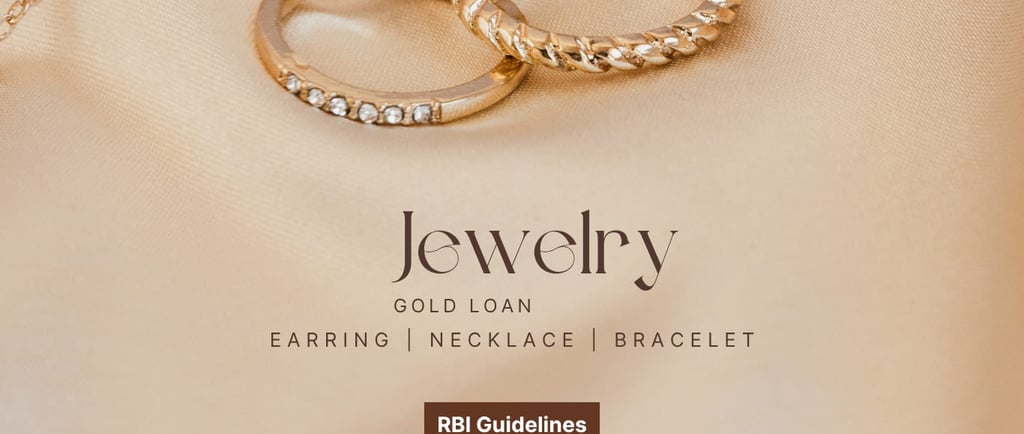Master Class on Business and Financial analysis
Reserve Bank of India (Lending Against Gold and Silver Collateral) Directions, 2025
The regulated entities (REs) have been permitted to lend against the collateral security of gold jewellery, ornaments and coins for meeting the short-term financing needs of borrowers. The REs are
BLOGINVEST
CA Rohit Tendulkar
7/30/20252 min read


Reserve Bank of India (Lending Against Gold and Silver Collateral) Directions, 2025
The regulated entities (REs) have been permitted to lend against the collateral security of gold jewellery, ornaments and coins for meeting the short-term financing needs of borrowers. The REs are
i. Commercial Banks (including Small Finance Banks, Local Area Banks and Regional Rural Banks, but excluding Payments Banks).
ii. Primary (Urban) Co-operative Banks (UCBs) & Rural Co-operative Banks (RCBs), i.e., State Co-operative Banks (StCBs) and Central Co-operative Banks (CCBs).
iii. All Non-Banking Financial Companies (NBFCs), including Housing Finance Companies (HFCs).
A lender shall not grant any advance or loan against primary gold or silver or financial assets backed by primary gold or silver, e.g., units of Exchange-traded funds (ETFs) or units of Mutual Funds. A lender shall not extend a loan where ownership of the collateral is doubtful.
The REs must carry out detailed credit assessment, including assessment of borrower’s repayment capacity shall be undertaken in case the total loan amount against eligible collateral is above ₹2.5 lakh to a borrower. A lender may renew an existing loan or sanction a top-up loan upon a formal request from the borrower and subject to a credit assessment. Tenor of consumption loans in the nature of bullet repayment loans shall be capped at 12 months, which may be renewed after credit assessment.
Loans against ornaments and coins shall be subject to the following: the aggregate weight of ornaments pledged for all loans to a borrower shall not exceed 1 kilogram for gold ornaments, and 10 kilograms for silver ornaments. And the aggregate weight of coin(s) pledged for all loans to a borrower shall not exceed 50 grams in case of gold coins, and 500 grams in case of silver coins.
Valuation and Assaying of Gold and Silver collateral, Gold or silver accepted as collateral shall be valued based on the reference price corresponding to its actual purity (caratage). For this purpose, the lower of (a) the average closing price for gold or silver, as the case may be, of that specific purity over the preceding 30 days, or (b) the closing price for gold or silver, as the case may be, of that specific purity on the preceding day, as published either by the India Bullion and Jewellers Association Ltd. (IBJA) or by a commodity exchange regulated by the Securities and Exchange Board of India (SEBI) shall be used. If price information for the specific purity is not directly available, the lender shall use the published price available for the nearest available purity and proportionately adjust the weight of the collateral based on its actual purity to arrive at valuation. For the purpose of valuation, only the intrinsic value of the gold or silver contained in the eligible collateral shall be reckoned and no other cost elements, such as precious stones or gems, shall be added thereto.
Loan to Value Ratio (LTV), the maximum LTV ratio in respect of consumption loans against the eligible collateral shall not exceed LTV ratios as provided in the table below and shall be maintained on an ongoing basis throughout the tenor of the loan.:
The prescribed LTV ratio shall be maintained on an ongoing basis throughout the tenor of the loan.
Maximum LTV ratio
≤₹2.5 lakh
85 per cent
> ₹2.5 lakh & ≤ ₹5 lakh
80 per cent
> ₹5 lakh
75 per cent
CA Rohit Tendulkar
The author can be reached at https://dhandasikho.online

Invest
Learn to trade and invest in the market.
Trade
Market
info@dhandasikho.online
+919309542795
Mumbai gossips © 2025-26. All rights reserved.
